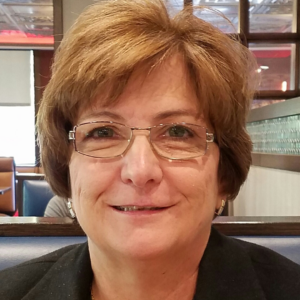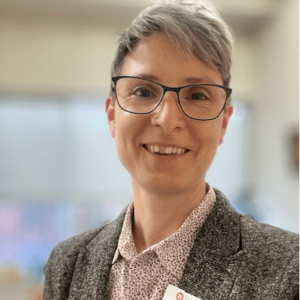Strategies to Facilitate Family and Resident Connections in Memory Care
Fostering connections and communication between memory care residents and their family members is an essential element of providing quality memory care. Those connections are important not only to residents, but they’re also a key element of helping family members navigate this challenging time.
“There’s a popular saying, ‘When you’ve met one person living with dementia, you’ve met one person living with dementia,’ which means everyone experiences dementia in a different way,” says Carrie Chiusano, executive director of the Dementia Care Center of Excellence for Presbyterian SeniorCare Network. “However, no matter how this disease affects a person, the most important thing for family members to know is that with knowledge about dementia and dementia care, good communication skills, and support from friends and family, they can maintain a positive and caring relationship with the person living with dementia.”
Challenges in Facilitating Family and Resident Connections

Carrie Chiusano, executive director of the Dementia Care Center of Excellence for Presbyterian SeniorCare Network
While those connections are highly valuable, they’re not always easy to maintain. Chiusano explains that a common challenge occurs when a family member doesn’t believe their loved one should be in a care community. They might say, “My father isn’t like those other people,” or they might not accept or recognize the changes dementia causes. “It’s hard for some families to let go of how a person living with dementia used to be and embrace who they’ve become,” she says.
For others, adapting to how dementia has changed their relationship with their loved one is a challenge. Chiusano describes a mother and daughter who had become best friends. “They shared everything and used to have long conversations about every aspect of their lives. Then, when the mother was unable to maintain a conversation, the daughter struggled during visits because she just didn’t know what to do with her mom when they are together,” she explains. “We worked with the daughter and focused her on what her mother could still participate in, the things she still enjoyed, like family, pottery, painting and knitting.”
Strategies to Best Facilitate Family and Resident Connections
The above story is an example of how a memory care program can support both residents and their family members, improving their relationship and helping them connect in new ways. Chiusano explains that supporting resident and family interactions starts with education.
She recommends that programs educate family members about dementia, including how it progresses, how to communicate with the individual living with dementia, and different ways to engage with that individual.
“We practice person–directed or person–centered care, which means knowing what the person likes to do and providing them, and their families, with opportunities to engage together,” Chiusano explains. Those engagement opportunities might include walking, gardening, singing, being with children, cooking, or woodworking.
In addition to identifying activities the resident enjoys, Chiusano explains that it’s just as important to know and respect what that individual doesn’t love to do. “It is important to understand that dementia is a changing and unpredictable disease, something the person loved yesterday may not be of any interest to them today,” she says. “So be flexible, pay attention to changes and signs of frustration and be prepared with several options to ensure successful engagement.”
Using Technology to Support Connections
Technology can also help to support those important connections. “Thinking about that mother and daughter relationship and how they were fortunate enough to have a best friend forever, this is where technology has proved to be magical,” says Chiusano. The pair used a tablet to Facetime a family member, and were able to share the experience of seeing the mother’s great-grandchild for the first time.
Chiusano explains that technology made a visit for a father and son more meaningful, too. The son wanted to show his father a repair that he’d performed on a tractor they had both worked on over the years. The son Googled the model of the tractor and took his father through the project step-by-step. “Normally during a visit, father and son sat next to each other and really didn’t have much to say,” says Chiusano. “But this time, with the video of the tractor on a large screen, they chatted away and were completely engrossed. It was amazing how much the man living with dementia recalled about the tractor he owned and the many, many repairs he’d done on it.”
The Importance of Fostering Connections
Fostering such valuable connections may require extra effort by the memory care program, but it’s an important element of providing care. “Many individuals living with dementia still have their ‘emotional memory,’” says Chiusano. “Even though they may not recognize a family member, or be able to recall their name, they remember how being with that person made them feel. These positive connections are important for family members as well.”
Transitioning a family member into a memory care community is a challenging and emotional decision, and family members often need ongoing affirmation that they made the right choice. “Seeing their family member thriving in an environment that meets their needs helps to reinforce that they made the right decision,” Chiusano notes. “This particular chapter in their relationship is new, and families often benefit from coaching not only on the importance of visiting, but also on how to make the visit a positive one.”

Paige Cerulli is a contributing writer to i Advance Senior Care.
Related Articles
Topics: Activities , Alzheimer's/Dementia , Featured Articles , Information Technology , Resident Care , Technology & IT











